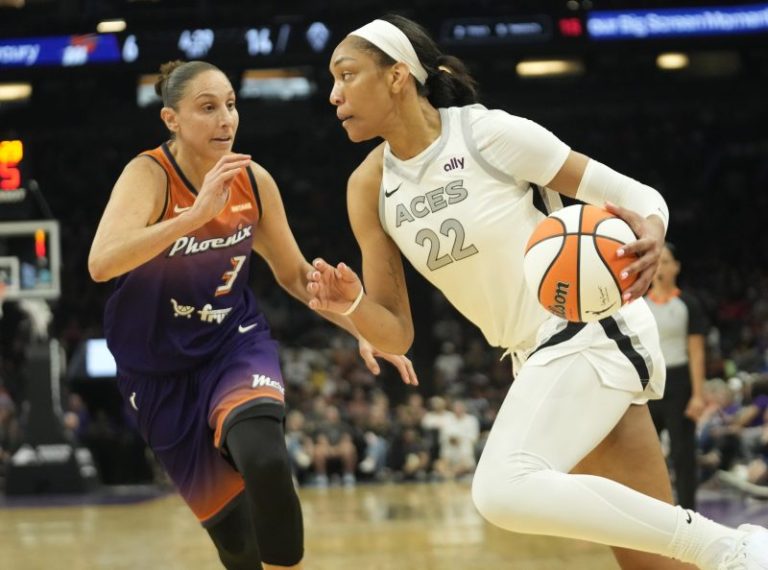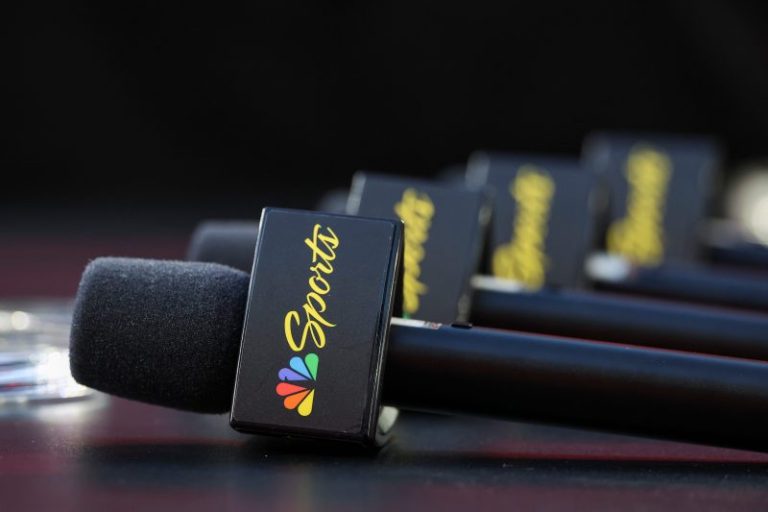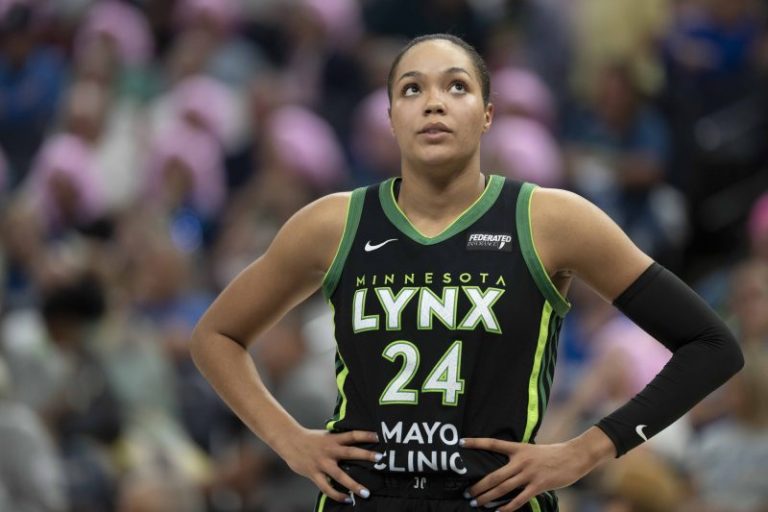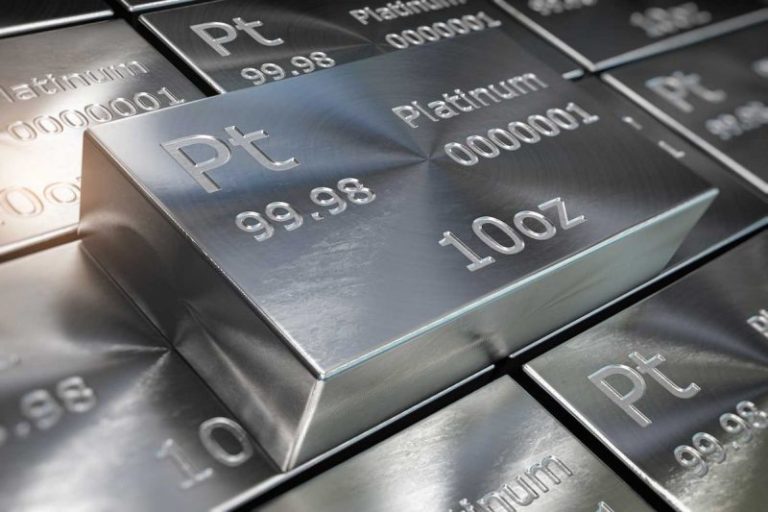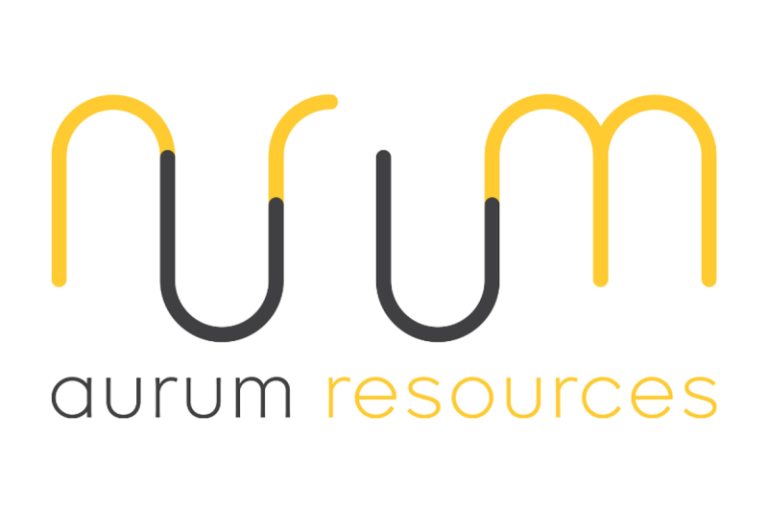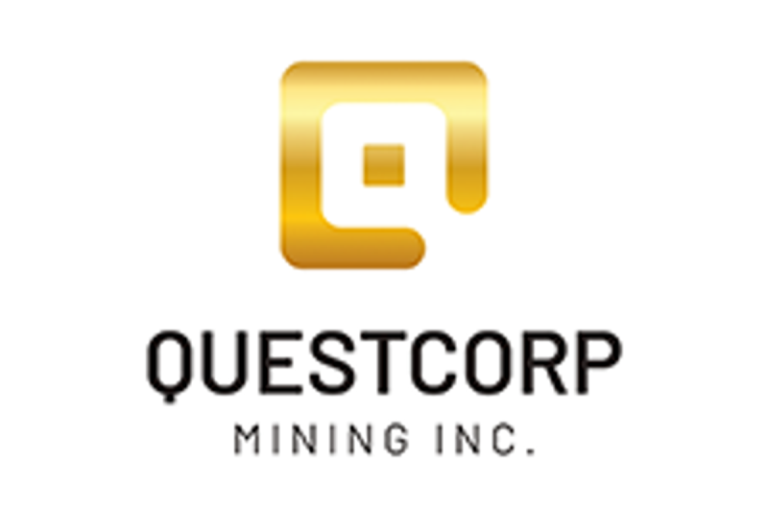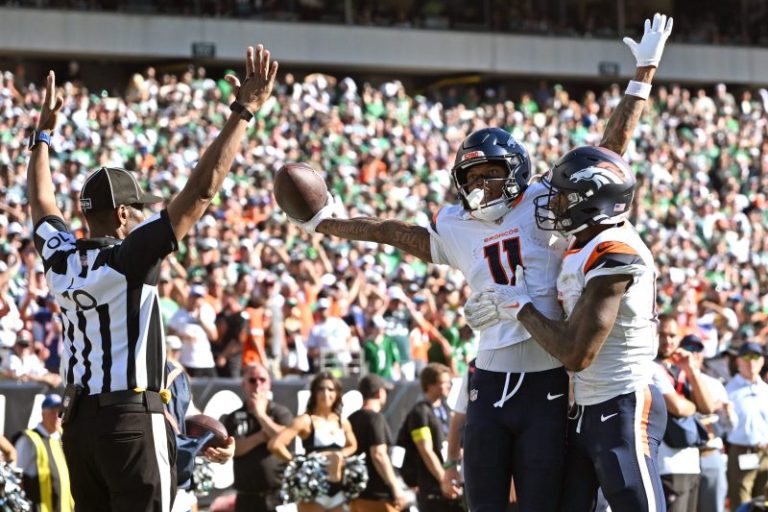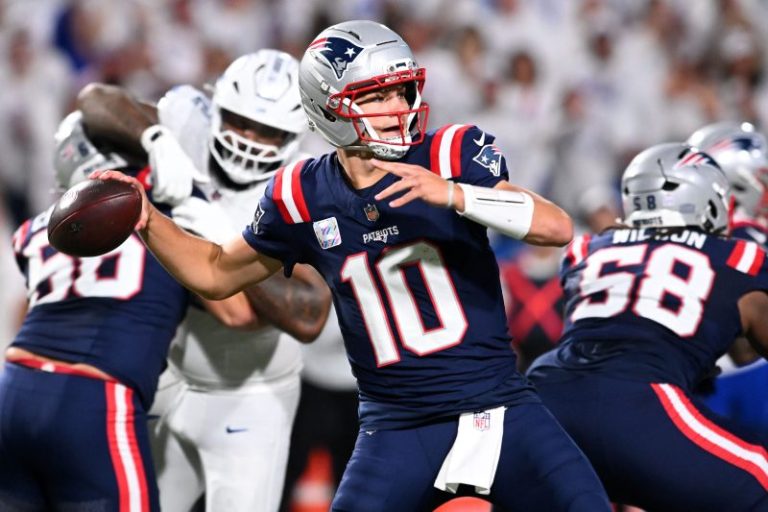The New England Patriots beat the Buffalo Bills on ‘Sunday Night Football’ in Week 5, knocking off the last of the NFL’s unbeaten teams in a 23-20 victory on the road in Orchard Park.
The victory wasn’t easy. The Patriots nearly squandered a 10-point fourth-quarter lead after allowing back-to-back scoring drives to the Bills.
However, Drake Maye orchestrated an excellent final drive for the Patriots. He capably led the Patriots 37 yards over seven plays and set up rookie kicker Andy Borregales for a 52-yard field goal attempt. Borregales’ kick split the uprights with 15 seconds left, leaving no time for Josh Allen and Co. to make a comeback.
Maye showed during Sunday’s contest that he could hold his own against Allen, as the second-year quarterback completed 22 of 30 passes for 273 yards and a 101.1 passer rating. He showed a strong connection throughout the contest with Stefon Diggs (10 catches, 146 yards) as the two carried a Patriots offense that averaged a disappointing 3.2 yards per carry against a porous Bills run defense.
Meanwhile, Allen had a solid showing for the Bills. The reigning NFL MVP completed 22 of 31 passes for 253 yards and two touchdowns while also leading the team in rushing yards (53).
However, Allen was also responsible for two turnovers, an interception and a lost fumble, a microcosm of an uncharacteristically sloppy game for the Bills. Buffalo turned the ball over three times in total after doing so just once over its first four games.
USA TODAY Sports provided updates, highlights and more from the Bills vs Patriots on Sunday night below.
Bills vs. Patriots instant takeaways
- Drake Maye is continuing to make strides in his second season: The 23-year-old still has room for improvement but was impressive Sunday, going toe-to-toe with Josh Allen in a hostile road environment. His steady performance on New England’s game-winning drive should inspire hope among the Patriots faithful that the UNC product can continue to develop into a star under Josh McDaniels’ tutelage.
- Stefon Diggs is healthy and balling: The veteran is looking fully healthy after posting 10 catches for 146 yards against his former team, the Bills. The 31-year-old has now posted back-to-back 100-yard outings and is building chemistry with Maye. Expect him to continue to make strides as he gets further removed from the ACL tear he suffered in October of last year.
- No panic in Buffalo: The Bills’ loss is more of a bump in the road than a reason for panic. Buffalo endured its sloppiest game to date, losing the turnover battle 3-1 and committing 10 penalties for 90 yards, so the Bills should bounce back quickly if they can avoid mistakes in a Week 6 ‘Monday Night Football’ battle with the Atlanta Falcons.
Stefon Diggs stats vs. Bills
- 10 receptions
- 12 targets
- 146 receiving yards
- 0 touchdowns
Drake Maye stats vs. Bills
- 22-of-30 (73.3% completion rate)
- 273 yards
- 0 passing touchdowns
- 0 interceptions
- 101.1 passer rating
- 3 rush attempts for 12 yards and 0 rushing touchdowns
Josh Allen stats vs Patriots
- 22-of-31 (70.9% completion rate)
- 253 yards
- 2 passing touchdowns
- 1 interception
- 103.3 passer rating
- 9 rush attempts for 53 yards and 0 rushing touchdowns
James Cook stats vs. Patriots
- 15 rush attempts
- 49 rushing yards
- 0 touchdowns
- 0 receptions
- 1 target
Dalton Kincaid stats vs. Patriots
- 6 receptions
- 6 targets
- 108 receiving yards
- 0 touchdowns
TreVeyon Henderson stats vs. Bills
- 6 carries
- 24 rushing yards
- 2 receptions
- 3 receiving yards
- 0 touchdowns
Rhamondre Stevenson stats vs. Bills
- 7 carries
- 14 rushing yards
- 2 receptions
- 13 receiving yards
- 2 total touchdowns (both rushing)
Bills vs. Patriots highlights
Bills vs. Patriots final score: Patriots 23, Bills 20
Bills vs Patriots score: Andy Borregales 52-yard field goal to take the lead
The Patriots drive 37 yards, resulting in a 52-yard game-winning field goal by Andy Borregales.
Patriots 23, Bills 20
Matt Prater ties game with 45-yard field goal
The Bills have overcome a 10-point fourth-quarter deficit to tie the Patriots. Prater’s 45-yard attempt snuck inside the right upright, so with 2:17 left in regulation, Buffalo and New England are tied at 20.
Bills 20, Patriots 20
Patriots go 3-and-out after key false start, sack
The Patriots had a third-and-inches on the drive following Buffalo’s touchdown, but backup offensive lineman Vederian Lowe was whistled for a false start before a QB sneak to back New England up. Then, on third-and-5, Drake Maye was flushed from the pocket and forced out of bounds for a short loss.
That forced the Patriots to punt the ball back to the Bills, who are trailing 20-17. Bryce Baringer’s kick went into the end-zone, so Buffalo will need to go 80 yards to take the lead with 5:52 left in regulation.
Bills vs. Patriots score: Bills respond quickly with Keon Coleman TD
The Bills respond quickly down two scores and make it a three-point game yet again. Keon Coleman hauls in a two-yard score in the back of the end zone. Buffalo drives down the field 74 yards on just eight plays thanks to two 15-yard penalties against New England. First a roughing the passer penalty on Cory Durden followed by an unnecessary roughness penalty on the next play on rookie Joshua Farmer.
New England will aim to answer with 7:37 to go.
Patriots 20, Bills 17
Bills vs. Patriots score: Rhamondre Stevenson scores second TD, Patriots extend lead
The Patriots dive 90 yards on 11 plays that resulted in Rhamondre Stevenson’s second touchdown of the night on a seven-yard scamper. Stefon Diggs has exploded in the second half and accounted for 53 yards on four catches throughout the 5:43 scoring drive.
The Bills find themselves down two scores with just over 12 minutes remaining.
Patriots 20, Bills 10
End of third quarter: Patriots driving into Bills territory
New England holds a 13-10 lead after forcing a turnover deep in its own territory on the Bills’ last drive. Now, the Patriots are driving into Bills territory at the start of the fourth quarter looking to extend their lead.
Stefon Diggs drags toes on sideline catch for third down conversion
The former Bill, continues to make a mark on tonight’s game against his former team. This time, he shows us some toe-drag swag on a 10-yard catch on third down, which resulted in a new set of downs for the Patriots.
Bills penalties today
The Bills have struggled with penalties in their Week 5 game against the Patriots. Buffalo has been penalized for 10 accepted infractions, which have resulted in a total of 80 yards in penalties.
By comparison, the Patriots have committed four penalties for 40 yards.
Marcus Jones intercepts Josh Allen, marking third Bills turnover
The Bills continue to struggle with turnovers after committing just one in their first four games. Patriots cornerback Marcus Jones undercut an Allen throw intended for Khalil Shakir and brought it in before being tackled at the 10-yard line.
Buffalo was in scoring range before the interception. Now, New England will have a chance to extend its lead, though it is backed up deep in its own zone.
Stefon Diggs stats today
Thus far, Diggs’ return to Buffalo has been a good one. The veteran is leading the Patriots with five catches for 81 yards and has seen a team-high seven targets during the contest.
With 6:34 left in the third quarter, Diggs may be on his way to his second consecutive 100-yard receiving game.
Bills vs. Patriots score: Patriots answer with Rhamondre Stevenson TD run
After Buffalo opened the second half with its first touchdown, Drake Maye and the Patriots answered. The second-year quarterback went 3 of 3 passing for 64 yards, including two completions for 48 yards to Stefon Diggs, before Stevenson turned his lone touch into a 4-yard touchdown run.
Andy Borregales makes the extra point, and the Patriots are back on top, leading 13-10.
Patriots 13, Bills 10
Bills vs Patriots score: Josh Allen tosses first TD of game to Curtis Samuel
Sean McDermott and Joe Brady dialed up a unique motion for Samuel, who bluffed an orbit-type motion before changing directions. The result? He ended up wide open for an easy check-down and waltzed into the end-zone for the score.
Matt Prater’s extra point is good, and Buffalo has its first lead of the day, 10-6.
Bills 10, Patriots 6
What number is TreVeyon Henderson?
Henderson is No. 32, for those having trouble locating him on the field. For some reason, the font on the second-round rookie’s jersey is smaller than that of his counterpart’s, making it harder for fans and NFL analysts, like Ryan Fitzpatrick, to read. https://x.com/FitzMagic_14/status/1975009599540584949 It isn’t clear why the nameplate font on Henderson’s jersey is smaller, but just know the Ohio State product is wearing the number 32.
Drake Maye stats at halftime
Maye has completed 9 of 16 passes for 89 yards in the first half, good for a passer rating of 72.1. He showed good rhythm on the Patriots’ final drive of the half but has found himself under pressure from Buffalo’s strong defensive front, taking two sacks in the first half.
Maye has also added 12 yards on three carries and could be asked to run more in the second half with Antonio Gibson (knee) ruled out for the game.
Josh Allen stats at halftime
Allen was efficient in the first half, completing 9 of 11 passes for 100 yards, good for a 104.5 passer rating. The reigning MVP is also tied for his team’s lead in rushing yards, racking up 32 on four carries in the first half.
That said, Allen has also made a couple of mistakes, taking an 8-yard sack and losing a fumble. He will look to clean up those errors in the second half.
Bills vs. Patriots score: Patriots settle for field goal, take 6-3 lead into halftime
Drake Maye got the Patriots to the 1-yard line, but Hunter Henry couldn’t catch a quick pass to the flat with 1 second left in the half. Mike Vrabel settled for a 19-yard Andy Borregales field goal, and the rookie was able to kick it through with ease.
Despite the score, the Bills have actually outgained the Patriots 159-135 in the first half. However, the Bills have committed eight penalties for 65 yards, compared to two for 20 yards by the Patriots, while New England is winning the turnover battle 2-1.
The Bills will get the second-half kickoff and will get the next crack at notching the game’s first touchdown.
Patriots 6, Bills 3
Milton Williams helps sack Josh Allen, force Bills punt
Allen was sacked just seven times across the first four games of the 2025 NFL season. The Patriots got to him late in the second quarter, when Milton Williams and Jaylinn Hawkins pressured him and slung him to the ground.
The Bills were forced to punt, and the Patriots regained possession on their own 30-yard line. New England will look to score in the 2:22 remaining before halftime in the 3-3 tie.
Patriots rule out Antonio Gibson with knee injury
The Patriots will play the remainder of their game without Gibson. The running back suffered a knee injury on a kick return and was quickly ruled out by the team.
New England now has just two healthy running backs remaining on its roster: starter Rhamondre Stevenson and second-round rookie TreVeyon Henderson.
Bryce Baringer pins Bills at 10-yard line after another Patriots punt
The bad news for Patriots fans? Baringer has had to punt three times. The good news? He has pinned the Bills inside their own 15-yard line with each kick.
This time, Khalil Shakir opted not to field Baringer’s kick and the Patriots downed it at the 10-yard line. Josh Allen and the Bills will have a long field to cover with 6:24 left in the second quarter.
Antonio Gibson injury update
Gibson, a running back for the Patriots, was injured on a kick return following Buffalo’s field goal. The veteran was upended after being hit hard in the leg by Bills defensive back Cam Lewis, and he fumbled the ball.
Gibson remained down on the field for a couple of minutes before leaving the field gingerly but under his own power. He went to the blue medical tent for further evaluation.
How old is Matt Prater?
Prater is 41 years old, making him the second-oldest active player in the NFL behind only Pittsburgh Steelers quarterback Aaron Rodgers.
Prater is in his 19th season and has played for five different teams during his NFL career.
Bills vs Patriots score: Matt Prater makes 31-yard field goal to tie game
The Bills have answered the Patriots’ game-opening score. Josh Allen marched the Bills down the field with some big passing plays, including a 23-yarder to Joshua Palmer, but the Patriots got a key stop on third down in the red-zone.
Prater’s 31-yard attempt was true, and the Bills and Patriots are tied at 3 with 9:34 left in the second quarter.
Bills 3, Patriots 3
How many fumbles does Rhamondre Stevenson have?
After his latest fumble, Stevenson has put the ball on the turf three times this season. His third fumble came on his 44th touch, meaning he has fumbled roughly every 14.7 touches thus far in 2025.
Stevenson had seven fumbles on 240 touches last season, good for one fumble every 34.3 touches.
Patriots leading Bills 3-0 after sloppy first quarter
Both the Patriots and Bills have gotten off to a slow start in their ‘Sunday Night Football’ battle, but New England is leading thanks to a couple of Buffalo turnovers.
The Bills had just one turnover across their first four games. In one quarter Sunday, they fumbled twice, losing both and setting the Patriots up for their chip-shot field goal near the end of the first quarter.
The Patriots had a turnover of their own after the fumble-prone Rhamondre Stevenson lost his third of the 2025 NFL season. However, New England’s defense has done a good job limiting Josh Allen and James Cook, who have just 15 combined rushing yards on five carries.
Allen has performed well as a passer, completing 5 of 7 passes for 61 yards, but the Bills have often been behind the chains. Buffalo has been called for five penalties and lost 29 total yards because of them.
The Bills will need to clean up their operation to get on the board, but they have plenty of time to figure things out in this divisional rivalry.
Bills vs Patriots score: Andy Borregales makes 30-yard field goal to put Patriots ahead
The Patriots get on the board first on ‘Sunday Night Football.’ They weren’t able to gain any yardage after recovering Keon Coleman’s fumble, but Borregales was able to make a chip-shot 30-yarder with ease.
Keon Coleman loses fumble, giving Patriots ball in red-zone
The Bills entered their Sunday night game against the Patriots having committed just one turnover on the season. They now have two turnovers in the first quarter after Keon Coleman fumbled after a short catch.
The Patriots jumped on the ball at Buffalo’s 11-yard line. That puts New England well within scoring range as the first quarter winds down.
Stefon Diggs drops potential first-down catch, forcing Patriots punt
Diggs caught his first target of the day, but he couldn’t do the same on his second. Drake Maye’s throw was placed on Diggs’ back shoulder slightly behind the veteran, but Diggs couldn’t reel it in.
Rather than go for it on fourth-and-3, the Patriots decided to punt. The Bills will once again start from inside their own 15-yard line in a 0-0 tie.
Why Josh Allen says ‘Go Pokes’ in SNF intro
Allen’s ‘Go Pokes’ message is a nod to his alma mater, Wyoming. The Cowboys use ‘Go Pokes’ as their rallying cry – much like Alabama fans say ‘Roll Tide!’ to honor the Crimson Tide – so consider the message Allen’s way of honoring his roots.
Bills stall out, punt for first time
Thus far, the Bills and Patriots have traded punts and fumbles across their ‘Sunday Night Football’ game’s first four possessions.
Buffalo has been able to move the ball a bit better than New England, with Josh Allen completing 4 of 6 passes for 59 yards, but his last two passes have fallen incomplete.
Rhamondre Stevenson fumbles ball right back to Bills
One play after recovering a fumble, the Patriots fumbled it right back to the Bills. Stevenson caught a dump-off from Drake Maye before having the ball punched out of his hands by Shaq Thompson.
Stevenson has now fumbled three times on 44 touches across five games for the Patriots in 2025.
Patriots recover fumble after Dawson Knox knocks ball out of Josh Allen’s hands
The Bills got the ball near midfield on their first drive before giving the ball back to the Patriots. Josh Allen was under center when he took the snap with tight end Dawson Knox coming across on jet motion.
Knox bumped into Allen, jarring the ball out of his hands and allowing Patriots defensive tackle Joshua Farmer to pounce on it with ease.
Bills force punt on first possession
The Patriots got off to a good start, as Drake Maye completed his first pass to Stefon Diggs for 15 yards. However, New England couldn’t get another first down after that and were forced to punt the ball to Buffalo.
Josh Allen and the Bills will begin their first offensive possession of the night from their own 14-yard line after a Khalil Shakir fair catch.
Stefon Diggs catches pass on first play from scrimmage
In the veteran’s first game back in Buffalo, he reeled in a 15-yard pass from Drake Maye on the first play of the game.
What time does Bills vs Patriots game start?
The Bills and Patriots game will start at 8:20 p.m. ET on Sunday, Oct. 5.
What TV channel is Bills vs Patriots on?
NBC will broadcast the Bills vs Patriots ‘Sunday Night Football’ matchup. Mike Tirico and Cris Collinsworth will be on the call, with Melissa Stark providing updates from the sideline.
Stefon Diggs takes the field in Buffalo wearing Patriots uniform
Bills uniforms tonight vs Patriots
The Buffalo Bills are unveiling their ‘Cold Front’ uniforms tonight against the Patriots. It marks the debut of the all-white alternates, and Buffalo is hosting a white-out event at Highmark Stadium to commemorate the occasion.
Bills inactives vs. Patriots
Patriots inactives vs. Bills
Josh Allen arrives for Week 5 vs. Patriots
The reigning NFL MVP arrives for the Bills’ Week 5 matchup and is wearing the fourth of nine custom hats designed by patients at Buffalo’s Oishei Children’s Hospital. After each home game, his hat will be auctioned off to support the Patricia Allen Fund.
Bills 2025 schedule
Patriots 2025 schedule
Bills vs Patriots live stream
- Live stream:Fubo | Peacock
Peacock, NBC’s proprietary streaming service, will carry the ‘SNF’ game.
Fubo will also carry Bills vs. Patriots. Fubo has NBC, as well as CBS, Fox, ABC, NFL Network and the ESPN family of networks, meaning you can catch NFL action all season long with the streaming service. Fubo also offers a free trial.
Watch 2025 NFL action with Fubo (free trial)
4th & Monday: Our NFL newsletter always brings the blitz
Do you like football? Then you’ll enjoy getting our NFL newsletter delivered to your inbox.
Get the latest news, expert analysis, game insights and the must-see moments from the NFL conveniently delivered to your email inbox. Sign up now!
Who are the announcers for Bills vs. Patriots on NBC?
Mike Tirico will handle play-by-play duties during the game, with Cris Collinsworth providing color commentary and Melissa Stark reporting from the sidelines.
NBC’s weekly ‘Football Night in America’ pregame show will begin at 7 p.m. ET and feature insight from a panel of analysts, including Maria Taylor, Jason Garrett, Chris Simms, Mike Florio, Devin McCourty, Tony Dungy, and more.
Bills vs. Patriots odds
Bills vs Patriots injury report
How tall is Josh Allen?
Josh Allen is listed at 6-5, 237 pounds on the Bills’ official website.
Among NFL quarterbacks, only Joe Flacco, Justin Herbert and Trevor Lawrence are taller than Allen. All are listed at 6-6.
This post appeared first on USA TODAY

